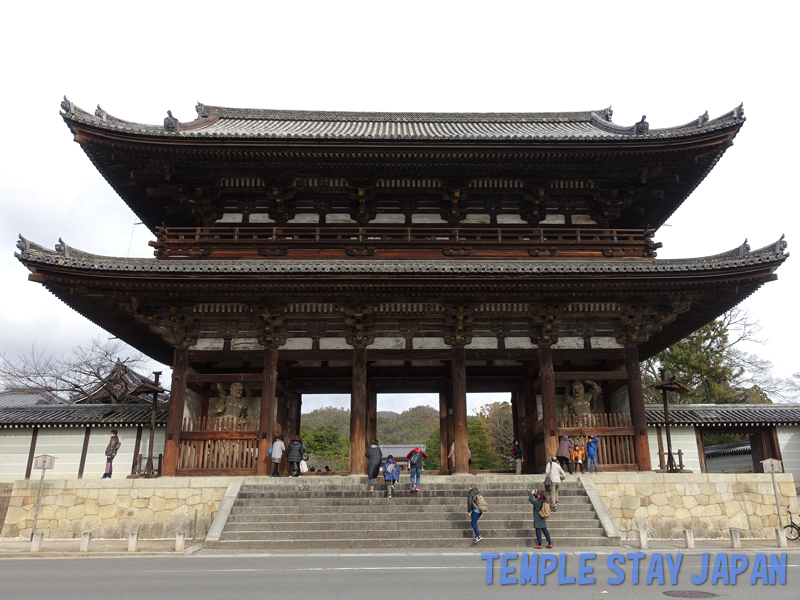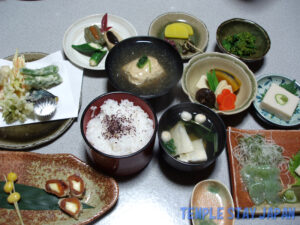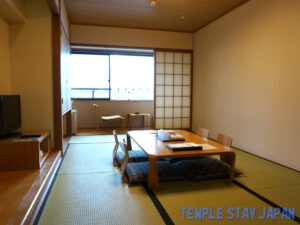Shukubo (temple stay)
This shukubo is located inside the precinct of Ninna-ji temple, a World Heritage Site. It is right next to the east gate of Ninna-ji. Since I arrived after the closing time of the gate, I contacted the shukubo staff through the entry phone at this east gate. I was allowed to enter inside the precinct.
The lodging is in temple architectural style and is made from reinforced concrete. It has good facilities, including a souvenir shop in the lobby, and a Japanese restaurant called Bon, etc.
Although I was traveling alone, I was given a room that was 14 tatami mats in size. The room had a safe, a refrigerator, a mirror, a yukata robe, a towel and a toothbrush. It was well heated. I stayed on a very cold and snowy day, but the room was warm and comfortable.
The restrooms, washbasins and baths are shared. Warm water is available at the washbasins and there were two heated lavatory seats with bidets.
It seems that the baths (large and small) are used alternately for men and women. The baths were equipped with showers and water can be added to the bath freely, so it is convenient. However, only wash towels are provided and bath towels are not. So, if you need a bath towel, you should bring one with you.
Dinner & Breakfast
The meals are served at the Japanese restaurant, Bon. The dinner was not shojin vegetarian cuisine. They served a whole sea bream, sashimi (slices of raw fish), steamed egg hotchpotch, cooked vegetables and grilled fish. It looked gorgeous and was plentiful and tasted good.
The breakfast included fish, vegetables, miso soup and cooked rice. As simple as it was, the freshly cooked rice tasted especially good. As for me, I ate all of the rice in the container.
Morning service
The biggest charm here is the morning service. You are able to spend a solemn time in the morning in the main hall, a national treasure that is usually not open to sightseers.
When the service began, the outside was utterly dark. As the sun rose, the morning sunlight came into the hall and the figures of Amida Nyorai (Amitabha), Kannon Bosatsu(Avalokitesvara) and Seishi Bosatsu(Mahasthamaprapta) gradually appeared in the hall, looking very shiny.
The sutra was chanted rather quietly and in the end, we were able to listen to a sermon. After the service in the main hall was complete, I saw the priests lining up outside. They toured the many halls in Ninna-ji temple one by one, chanting a sutra as they went. It was very impressive to see their well disciplined movements.
After the service was complete, we were allowed to walk around Ninna-ji temple free from sightseers before the gates opened. Because many of the buildings in Ninna-ji temple are national treasures and important cultural assets, I was able to spend really precious time having such a luxurious space to myself.
From Ninna-ji temple, you can walk to Ryuan-ji temple and Kinkaku-ji temple. You can take a bus to Takao from the bus stop in front of the temple. It is also easy to visit Arashiyama or Sagano by train or by bus.











